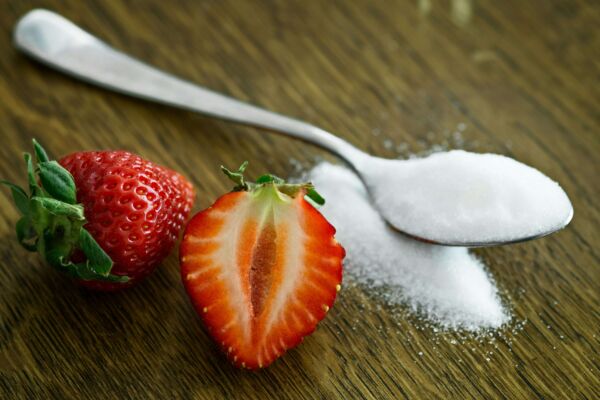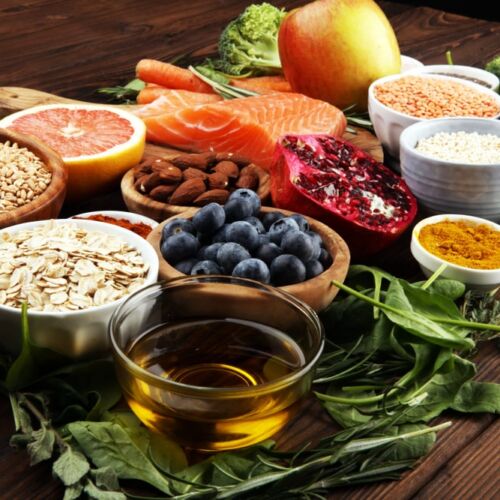5 Top Tips to Manage your Blood Sugar Levels
by Sally Ho, RD

Whether you have prediabetes, diabetes, or are interested in preventing cravings, knowing how to keep our blood sugar levels stable is important. Here are 5 top tips from Certified Diabetes Educator and Registered Dietitian Sally Ho of Motivate Nutrition to help you get started on optimizing your blood sugar levels.
Tip 1: “Low is Slow”- the Glycemic Index advantage
You may have heard of the term Glycemic Index, which is a scale that ranks carbohydrate-containing foods and drink based on how fast it will raise your blood sugars. Just like how temperature is measured on the scale of Celsius with 0 degrees is water freezing, the glycemic index sets 100 as the standard equivalent of white bread. Carbohydrate-containing food and drink that raise the blood sugars slower has a lower Glycemic Index (“GI”) number. Typically the more fibre or protein content a food item has, the lower the GI number. Good examples of foods that are low in GI include:
- Whole grain breads
- Steel Cut Oats
- Barley
- Pulses (beans, lentils, chickpeas)
Diabetes Canada has a short-list of some commonly occurring carbohydrate-containing foods and drink and their GI number here: https://www.diabetes.ca/resources/tools—resources/the-glycemic-index-(gi)
Choose lower GI number foods will give you a sustained and slower rise of blood sugars after eating. So choose these foods more often to keep your blood sugar, and your energy levels more stable.
Adults with type-2 diabetes will now be advised to think about the use of continuous glucose monitoring with the 2025 ADA Standards of Care, regardless of insulin administration. CGM gives you a more detailed view of your trends in blood sugar levels and shows your time in range, which is a vital indicator of how stable your blood sugar levels are.
Tip 2: Pair Your Carbs with Protein
Similar to choosing lower GI foods, you can make your meals and snacks have a slower and stable blood sugar rise by eating your protein as the same time as your carbohydrate-containing foods and drinks. For example, if you spread nut butters (rich in protein and healthy fats) on your apple slices (carbohydrates-containing food), then your blood sugars would rise slower than it you just ate apples by themselves.
Examples of protein and carb pairings:
- Hummus with pita
- Cheese and crackers
- Nuts and Fruit
ADA 2025 still highlights the use of evidence-based diets like the Mediterranean diet, DASH diet and plant-forward diets. An emphasis on high-fiber carbohydrates such as whole grains and legumes and plant-based proteins can maintain a steady blood sugar level and contribute to a healthy state.
Tip 3: Portion Sizes Matter
Quality of food matters, but quantity and portion sizes matter too. An easy way to keep your portion sizes in check is to use the healthy plate model as shown in the latest Canada’s Food Guide https://food-guide.canada.ca/en/
The beauty is in the simplicity of keeping your portions in a 2:1:1 ratio of vegetables to protein to carbohydrates-containing food. You can also think of it as half your plate is vegetables, and quarter of it is protein, and quarter is carbohydrates-containing food. Keep your plate to about 10” in diameter across, and your portions of carbohydrate-containing food would be small enough to prevent a large spike in blood sugars, and you would still feel satiated from your meal because of the vegetables and protein at your meal. Good to note: potatoes and corn are quite starchy vegetables, and would fit best in the carbohydrates-containing food section of the plate model. So the summer potato salads, and corn kernels would fit in the quarter of plate section and not the half-plate vegetables section.
Tip 4: Eat Regularly
Skipping meals is not ideal for keeping blood sugars stable. When we skip meals we can potentially overeat our portions at the next meal. Cravings can also be stronger so our food choices can be more sugar-ladened and less nutritionally balanced. Eating regularly, about every 3-4 hours can help mitigate these challenges and keep our blood sugars stable.
If you’re taking medications for diabetes, eating regularly also prevents hypoglycemia or too-low of blood sugars too.
Tip 5: Go for a Walk
Physical activity can help stabilize your blood sugars by increasing your insulin sensitivity or help your body use insulin more effectively; thereby preventing sugar spikes. So going for a walk after eating can potentially help keep your blood sugars stable. Physical activity also has a 24-hour effect on our blood sugars, so even after you have stopped moving your body is still feeling the effects. Depending on the intensity of physical activity, blood sugars can also increase from the release of sugars from our body storage to be used to fuel. (https://www.ncbi.nlm.nih.gov/pmc/articles/PMC6908414/)
Physical activity also has a 24-hour effect on our blood sugars, so even after you have stopped moving your body is still feeling the effects. Depending on the intensity of physical activity, blood sugars can also increase from the release of sugars from our body storage to be used to fuel.
The recent ADA guidelines emphasize the importance of aerobic exercise together with resistance training as muscle building enhances insulin sensitivity and avails additional storage capacity to hold glucose. Time in range is also reported to be enhanced with the use of CGM exercise.
So before you start an intense physical activity exercise regimen, talk with your doctor on how to ease into being more physically active. Walking can be an easy way to start keeping our blood sugars stable and reap all the benefits of physical activity for our health.
References
American Diabetes Association. (2025). Standards of care in diabetes—2025. https://diabetesjournals.org/care/issue/48/Supplement_1
Canada’s Food Guide. (n.d.). Healthy plate model. https://food-guide.canada.ca/en/
Diabetes Canada. (n.d.). The glycemic index (GI). https://www.diabetes.ca/resources/tools—resources/the-glycemic-index-(gi)
Ho, S. (2025). 5 top tips to manage your blood sugar levels. Motivate Nutrition. https://www.motivatenutrition.ca
Sally Ho is a registered dietitian located in Edmonton, Alberta. She provides nutrition counselling diabetes, digestive health, emotional eating, heart health, ketogenic & low carbohydrate, mindful eating, and weight loss. Sally can be found at https://www.motivatenutrition.ca/ for more information.
Images: From Unsplash and Pexels
The Site is not intended to be a substitute for professional advice. Under no circumstances will we be liable for any loss or damage caused by your reliance on information obtained through the Site. You are responsible for evaluating the accuracy, completeness, or usefulness of any information, opinion, advice, or other content available through the Site. Please seek the advice of professionals, as appropriate, regarding the evaluation of any specific information, opinion, advice, or other content. Never disregard professional advice, including medical advice, or delay in seeking it because of something you have read on this Site.



